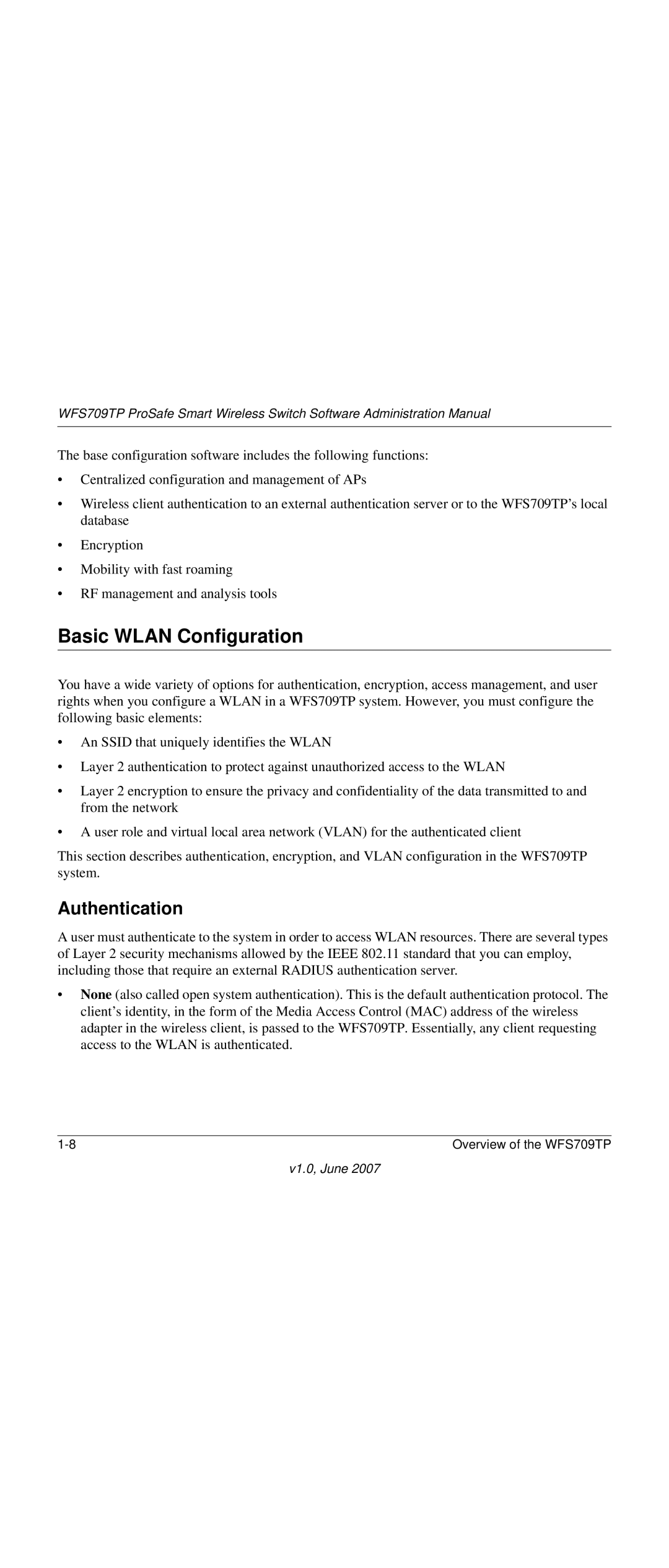
WFS709TP ProSafe Smart Wireless Switch Software Administration Manual
The base configuration software includes the following functions:
•Centralized configuration and management of APs
•Wireless client authentication to an external authentication server or to the WFS709TP’s local database
•Encryption
•Mobility with fast roaming
•RF management and analysis tools
Basic WLAN Configuration
You have a wide variety of options for authentication, encryption, access management, and user rights when you configure a WLAN in a WFS709TP system. However, you must configure the following basic elements:
•An SSID that uniquely identifies the WLAN
•Layer 2 authentication to protect against unauthorized access to the WLAN
•Layer 2 encryption to ensure the privacy and confidentiality of the data transmitted to and from the network
•A user role and virtual local area network (VLAN) for the authenticated client
This section describes authentication, encryption, and VLAN configuration in the WFS709TP system.
Authentication
A user must authenticate to the system in order to access WLAN resources. There are several types of Layer 2 security mechanisms allowed by the IEEE 802.11 standard that you can employ, including those that require an external RADIUS authentication server.
•None (also called open system authentication). This is the default authentication protocol. The client’s identity, in the form of the Media Access Control (MAC) address of the wireless adapter in the wireless client, is passed to the WFS709TP. Essentially, any client requesting access to the WLAN is authenticated.
Overview of the WFS709TP |
